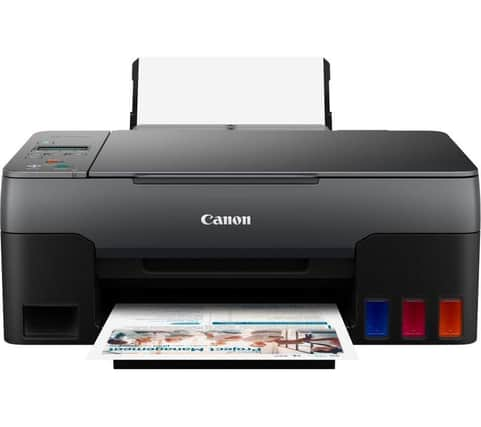Tank printers: Squeezing the dregs from a dying industry?


But the new trend towards printers with built-in ink tanks has turned convention on its head. Suddenly, machines that cost £40 are retailing for £200 or more, while the price of filling them up has fallen through the floor. But who benefits most: the printer makes or you?
Tank printers are being touted as the future of printing, especially in the home. The theory is that by using bottled ink instead of proprietary cartridges, you can save up to 90 per cent on each refill. The figures bear this out: a typical Epson black cartridge costs around £12.75 and yields 250 prints, whereas an equivalent ink bottle costs £4.50 less and prints 2,500 sheets.
Advertisement
Hide AdAdvertisement
Hide AdBut the savings are offset by the much greater start-up cost. Cartridge printers can be picked up as impulse buys at supermarkets and even the cheapest often include scanners and wireless connectivity. Tank printers, on the other hand, are £150 for a basic model, even accounting for recent price reductions. And if you want all the bells and whistles, you’re looking at £300.
In fairness, they do usually come with a full supply of ink, while bargain basement cartridge models often include only a low-capacity “starter pack”.
Whether the figures stack up for you depends on how much you print. Clearly, the more ink you get through, the more you save in the long run.
Yet the technology hasn’t really changed. Laser printers apart, they all use the same inkjet system to squirt black, cyan, magenta and yellow onto the paper in varying amounts. Only the method of refilling is different – which means the change from cartridges to tanks is more a business decision than a technical improvement.
Advertisement
Hide AdAdvertisement
Hide AdIt’s not hard to see why. For years, third-party ink manufacturers have been undercutting the printer makers by supplying “compatible” cartridges for a fraction of the price. The best of them are as good as the genuine articles, and as a result Epson and the others have invested fortunes in trying to make them not work in their hardware. A game of cat and mouse has ensued between ink and printer makers, with each trying to keep a step ahead of the technology.
Doing away with cartridges finally gives the big three the upper hand. Bottles are cheaper to manufacture than cartridges and harder to undercut, so the difference between “own brand” and genuine ink is typically only around 10 per cent. The topping-up process is more fiddly and potentially messier than before, but no more difficult than filling a salt pot, once you get used to it.
Currently, the best value tank printers are Canon’s £170 Pixma G2520 and the Epson ET-2726 at £10 more. The Canon model claims 6,000 black-and-white pages or 7,700 in colour from a single refill; Epson’s yield is slightly lower but this model can connect to your phone or PC wirelessly, either via wi-fi or Apple AirPrint.
Yet it could all be too little, too late. In an age of working and socialising remotely over the internet, the need to print information on bits of paper is receding, and may soon seem an anachronism. For those working from home,the paperless office has given way to the office-less office, in which sharing documents on screen is quicker, cheaper and more practical than committing them to A4. The new bottles could merely be squeezing the dregs from a dying industry.
Advertisement
Hide AdAdvertisement
Hide AdSupport The Yorkshire Post and become a subscriber today. Your subscription will help us to continue to bring quality news to the people of Yorkshire. In return, you’ll see fewer ads on site, get free access to our app and receive exclusive members-only offers. Click here to subscribe.
Comment Guidelines
National World encourages reader discussion on our stories. User feedback, insights and back-and-forth exchanges add a rich layer of context to reporting. Please review our Community Guidelines before commenting.